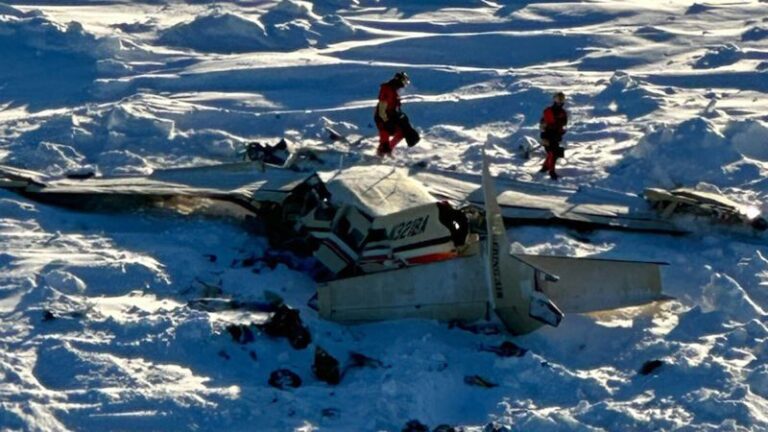Tragic Alaska Plane Crash: Recovery of All 10 Victims
In a somber development, search and recovery teams have confirmed that all ten victims of the recent Alaska plane crash have been successfully recovered. The incident, which involved a chartered aircraft, has deeply shocked the local communities and raised numerous questions about aviation safety in the region.
Overview of the Incident
On [specific date], a De Havilland DHC-3 Otter aircraft went missing shortly after takeoff from the town of [location]. Initially reported as a distress call, the plane lost communication with its control tower. Search efforts, which began almost immediately, involved the United States Coast Guard and Alaska State Troopers.
According to the Federal Aviation Administration (FAA), accidents involving general aviation aircraft, like the one in which the victims were flying, account for approximately 80% of all aviation accidents in the United States. Despite ongoing improvements in technology and safety protocols, these tragic incidents continue to occur far too often.

Victims of the Crash
The recovery effort, which took several days due to challenging weather conditions and the rugged terrain of Alaska, ultimately led to the identification of all ten victims. They ranged in age, occupations, and backgrounds, highlighting the diverse community that was affected by this tragedy. Among the victims were local fishermen, tourists, and dedicated outdoor enthusiasts who regularly flew in Alaskan skies for recreation or commerce.
Earlier studies show that Alaska experiences a higher rate of plane crashes than any other state, with roughly 1.7 crashes per 10,000 flight hours, compared to the national average of 1.3 crashes.

Search and Recovery Efforts
The search operation was exhaustive. Personnel deployed drones, trained dogs, and local volunteers, demonstrating the commitment of the community towards supporting one another during tragic times. Braving cold temperatures and the treacherous Alaskan wilderness, these responders worked tirelessly to bring closure to the victims’ families.
As the recovery progressed, grief and disbelief echoed through the towns linked to the victims. Community vigils were held, with expressions of sorrow and solidarity coming from numerous residents and organizations. While the successful recovery provided a crucial step towards closure, it also reignited concerns about flight safety in Alaska, especially given that the state is known for its vast, isolated regions with unforgiving weather conditions.

Safety Measures and Protocols
Following this heartbreaking plane crash, experts have called for reevaluating existing aviation protocols in Alaska. While many aircraft meet rigorous safety ratings, the unique environmental challenges necessitate a higher vigilance.
Statistically, Alaska has one of the highest numbers of general aviation airstrips per capita in the United States. In fact, there are around 700 registered airstrips in Alaska, but many are not monitored or regulated under the stringent guidelines seen in commercial aviation. This lack of oversight often contributes to risky flying practices, especially among charter operators.
Conclusion and Call to Action
As the investigation into the crash continues, aviation experts emphasize the need for improved safety measures. Suggestions range from increased training for pilots to better communication systems that ensure all aircraft remain in contact with control towers. The tragic loss of ten lives underscores the urgency of addressing these concerns.
As communities mourn the loss of their loved ones, it’s essential for stakeholders in Alaska’s aviation landscape to prioritize safety continuously. Families have not only lost parents, friends, and colleagues, but the incident also resonates with everyone reliant on air travel for both work and leisure in this vast frontier.
While recovery teams have worked diligently to conclude the search, the true challenge lies ahead—implementing lasting changes that make flying in Alaska safer for everyone. The tragic plane crash should serve as a catalyzing force for reform so that families never again have to endure such heartbreaking loss.

As more details emerge from this investigation, the primary goal must remain clear: honoring the victims by striving for a future where they’ll not be forgotten, and aviation safety in Alaska is significantly improved.


